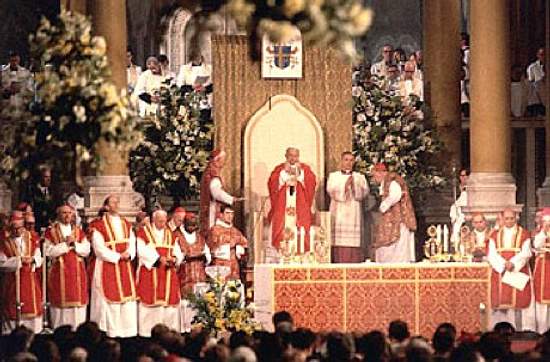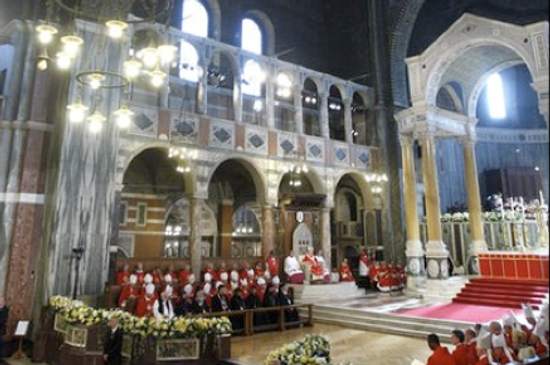Benedict’s broad liturgical approach can be described in terms of “continuity,” i.e. recovering elements of the liturgical tradition which he believes were too hastily set aside or downplayed in the immediate period after the Second Vatican Council.
The idea of a new liturgical movement came with strength from his book, Spirit of the Liturgy. A relevant section: “I am convinced that the crisis in the Church that we are experiencing today is to a large extent due to the disintegration of the liturgy … in that it is a matter of indifference whether or not God exists and whether or not he speaks to us and hears us. … Such circumstances will inexorably result in a disintegration. This is why we need a new Liturgical Movement, which will call to life the real heritage of the Second Vatican Council.” …
To his priests in the Diocese of Rome he said, “In the Eucharist we do not invent something, but we enter into a reality that precedes us, more than that, which embraces heaven and earth and, hence, also the past, the future and the present. … Hence, the liturgical prescriptions dictated by the Church are not external things, but express concretely the reality of the revelation of the body and blood of Christ and thus the prayer reveals the faith according to the ancient principle ‘lex orandi – lex credendi.’” … …
For the former Cardinal Joseph Ratzinger, (now Pope Benedict XVI) the liturgy is of its nature an inheritance, a space we inhabit as others have inhabited it before us. It is never an instrument we design or manipulate. Self-made liturgy is a contradiction in terms, and he distrusts liturgies that emphasize spontaneity, self-expression and extreme forms of local inculturation.
In his own book, Spirit of the Liturgy, Cardinal Ratzinger scathingly compared such liturgies to the worship of the Golden Calf, “a feast that the community gives itself, a festival of self-affirmation. Instead of being worship of God, it becomes a circle closed in on itself: eating, drinking and making merry … It is a kind of banal self-gratification … no longer concerned with God but with giving oneself a nice little alternative world, manufactured from one’s own resources.”
In his view, the liturgy is meant to still and calm human activity, to allow God to be God, to quiet our chatter in favor of attention to the Word of God and in adoration and communion with the self-gift of the Word incarnate.
The call for active participation seems to Benedict XVI to have “dumbed” down the mystery we celebrate, and left us with a banal inadequate language (and music) of prayer. The “active participation” in the liturgy for which Vatican II called, he argues, emphatically, does not mean participation in many acts. Rather, it means a deeper entry by everyone present into the one great action of the liturgy, its only real action, which is Christ’s self-giving on the Cross. We can best enter into the action of the Mass by a recollected silence, and by traditional gestures of self-offering and adoration – the Sign of the Cross, folded hands, reverent kneeling.
For the Pope, therefore, liturgical practice since the Council has taken a wrong turn, aesthetically impoverished, creating a rupture in the continuity of Catholic worship, and reflecting and even fostering a defective understanding of the Divine and our relationship to it.
His decision to permit the free celebration of the Tridentine liturgy was intended both to repair that rupture and to issue a call to the recovery of the theological, spiritual and cultural values that he sees as underlying the old Mass.
In his letter to the bishops of July 2007, he expressed the hope that the two forms of the one Roman liturgy might cross-fertilize each other, the old Missal being enriched by the use of the many beautiful collects and prefaces of Paul VI’s reformed Missal, and the celebration of the Novus Ordo recovering by example some of the “sacrality” that characterized the older form.
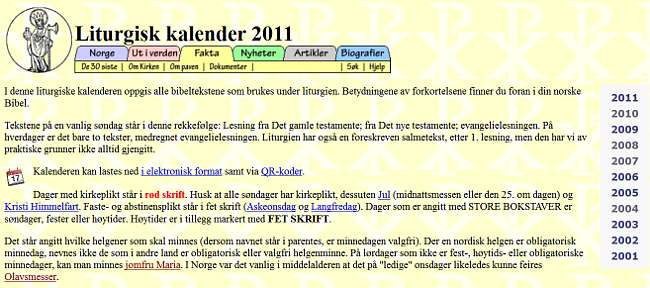

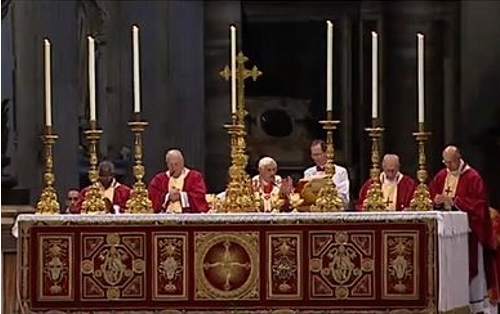 Jeg leste i dag
Jeg leste i dag  Fr Barthe has just launched a little bombshell called “the Mass the right way round”. … He believes he is supported by a mainstream, described in the Church as the reform of the reform. Explanations. …
Fr Barthe has just launched a little bombshell called “the Mass the right way round”. … He believes he is supported by a mainstream, described in the Church as the reform of the reform. Explanations. …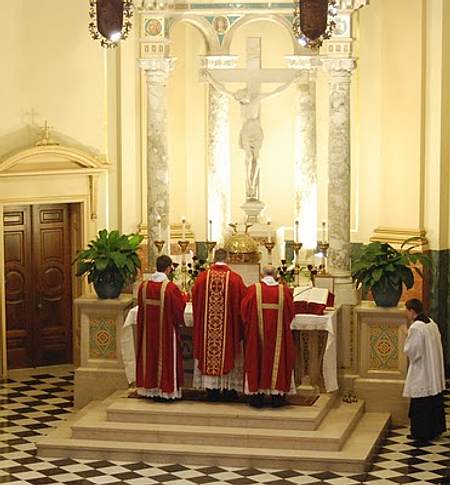
 Her snakker man altså om at de kan bli tatt opp i Kirken etter bestemmelsene i pave Benedikts dokument «Anglicanorum Cætibus», der de kan tas opp sammen i grupper (prest og menighet) og får beholde noe av sin egen liturgiske tradisjon. (Dvs. sine flotte liturgier, og også (får vi håpe) sine flotte kirker og altere – se bildet over.)
Her snakker man altså om at de kan bli tatt opp i Kirken etter bestemmelsene i pave Benedikts dokument «Anglicanorum Cætibus», der de kan tas opp sammen i grupper (prest og menighet) og får beholde noe av sin egen liturgiske tradisjon. (Dvs. sine flotte liturgier, og også (får vi håpe) sine flotte kirker og altere – se bildet over.) 